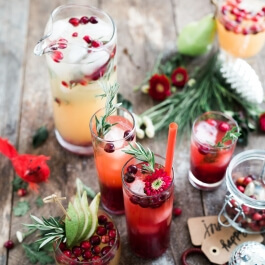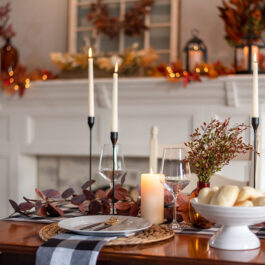Food
Livin’ La Vida Locavore: 4 Chefs On Locavorism
1“Local” is a curiously ill-defined culinary buzzword, interpreted by different restaurants, producers, vendors and authors in different ways. We asked four chefs what the locavore label means to them and how the homegrown, native, wild and foraged foods they embrace give their cooking a sense of place.
By Fiona Brutscher
0/13
Food
Livin’ La Vida Locavore: 4 Chefs On Locavorism.
2Chris Kiyuna of The Perennial (San Francisco, USA): While preparing for the opening of The Perennial, head chef Chris Kiyuna had a lot more to consider than the presentation and flavour of the food on the menu. Having staged at internationally famed Noma and worked as chef de cuisine at locally loved Mission Chinese Food, here he would only be telling half of the story through the look and taste of the dishes. The other half is the tale of how the ingredients are grown, sourced, transported, processed… and what that does to our environment. At The Perennial, both parts of that story add up to a happy ending – in the most ambitiously sustainable restaurant in the world. theperennialsf.com
1/13
Food
Livin’ La Vida Locavore: 4 Chefs On Locavorism.
2“Before we opened, there was some anxiety that we had to let go. Doing research on how harmful or helpful different food cultivation practices are can be very uplifting, but it can also be really depressing, so we just settled on the mindset that we’re going to do our best. We weren’t going to be a 300% sustainable entity from day one, but we’re never going to stop moving in that direction. When we do break the local designation, it’s to highlight a sustainable farming practice. With vegetables and grains, we’re lucky that so many things can come from Sonoma County, mostly within a 100-mile radius. On the other hand, the trout we serve is farmed, fed a 100% vegetarian diet, and is keeping alive certain local trout species in the Sierras, but it’s more than 100 miles away. It’s a pretty fluid negotiation.” – Chris Kiyuna, The Perennial
2/13
Food
Livin’ La Vida Locavore: 4 Chefs On Locavorism.
3“One really big takeaway from staging at noma was the way they look at vegetables. There’s a certain expectation that people have of produce, the way it looks and tastes. Over there, they look for unique phases in the life cycle of vegetables to catch you off guard. Maybe they wait until the bulb is seeding, or until a certain developing stage with a really rare emerging flavour. I was there in the spring, and they would pick blackcurrant shoots before they started to flower. That ended up as part of a seasoning, a remarkable flavour that you just couldn’t place. It opened your mind up to how much any single plant can produce, what it can offer you. I think that really falls in line with our vision here, that mindset of not letting anything go to waste.” – Chris Kiyuna, The Perennial
3/13
Food
Livin’ La Vida Locavore: 4 Chefs On Locavorism.
5Gert Jan Hageman of De Kas (Amsterdam, Netherlands) – It doesn’t get much more local than serving food in the midst of the greenhouse where it is grown. Gert Jan Hageman was more than a decade ahead of ‘real’ and ‘local’ food movements when he left behind a Michelin-starred career to become greenhouse landlord, founder of De Kas restaurant within that greenhouse, and eventually the grower in charge of the fresh, varied and seasonal produce grown there. His food philosophy neatly sums up what diners can expect from the light-flooded locavore’s dream: “I love simple food, prepared with respect. Honest, fresh, tasty and surprising. restaurantdekas.nl
4/13
Food
Livin’ La Vida Locavore: 4 Chefs On Locavorism.
6“Entering de Kas you walk between our fruit trees and through our our herb and edible flower garden. Inside the restaurant is our greenhouse, providing us with seasonal vegetables and herbs. On top of that, we have our nursery in the Beemster polder, only twenty minutes away, and our other suppliers are somewhere in between. It really is hyperlocal. Your taste and desire for quality really get spoiled by having such beautiful ingredients, picked at their peak, so close by.” – Gert Jan Hageman, De Kas
5/13
Food
Livin’ La Vida Locavore: 4 Chefs On Locavorism.
7“What can be more traditional than buying local? Before modern transport and preservation, there was no other way. By growing our own ingredients, we get absolute freshness, choice, variety, quality control and flexibility. We live in a small country, so even if we buy ingredients from the south of the Netherlands, that is still no more than two hours away. For us, local simply means as close by as you can find a certain ingredient. Mostly that means no more than an hour away. For a nice selection of ingredients, 100 km must be possible (at least in the Netherlands). By buying local, we pollute less, use less fuel, cooling systems, packaging etc. And personal contact with the makers gives us the opportunity to check where everything comes from.” – Gert Jan Hageman, De Kas
6/13
Food
Livin’ La Vida Locavore: 4 Chefs On Locavorism.
8Andrea Carlson of Burdock & Co (Vancouver, Canada) – Andrea Carlson was known as a proponent of the 100-mile diet even before she opened her own restaurant. As chef de cuisine at Raincity Grill, she launched a 100-mile tasting menu and received an acknowledgement in the Canadian book The 100-Mile Diet: A Year of Local Eating. At Burdock & Co, produce takes centre stage. Growers, farmers and foragers are known personally, and relationships to suppliers are paramount. Patrons who want more quality ingredients from the Canadian Pacific Northwest can also visit Carlson’s Harvest Community Foods grocery. burdockandco.com
7/13
Food
Livin’ La Vida Locavore: 4 Chefs On Locavorism.
9“I feel local eating is something that has always been fundamental to people. You grow it and you eat it. With the industrialisation of food, we moved far away from that model and are finally starting to reclaim a more traditional model in our modern world. For me, local eating is taking advantage of the opportunity to know your farmer, fisher, forager. We have tremendous access to farmer’s markets and fisherman’s wharfs in Vancouver. Supporting the relationships of our local food economy is vital, and any restaurant or grocer you go to that can tell you who grew the food is likely working with local food.” – Andrea Carlson, Burdock & Co
8/13
Food
Livin’ La Vida Locavore: 4 Chefs On Locavorism.
10“Advantages for personal relationships with producers are that you always have the freshest, most current harvest, and you learn to feel the seasons and anticipate the changes and new foods coming your way. I don’t see it as a disadvantage myself, but constant change and smaller production of products means you have to be more nimble with menu changes. For us, we love the challenge and welcome the opportunities to feed our creativity.” – Andrea Carlson, Burdock & Co
9/13
Food
Livin’ La Vida Locavore: 4 Chefs On Locavorism.
11Shaun Schoeman of Fyndraai at Solms Delta (Franschhoek, South Africa) – For Shaun Schoeman, going local holds several layers of meaning. Initially, it meant returning home to the French Corner of the Cape Winelands to apply his classical culinary training to a modern restaurant situated on a historic wine estate. It meant discovering and using indigenous ingredients in dishes celebrating South Africa’s ‘rainbow heritage’, but also using endemic herbs, grown on the estate. Finally, it meant training inexperienced local staff to create the “food of this place”. Most importantly, the dishes created by a local chef, with local staff, through local inspiration and from locally grown produce, is convincing on its own terms. According to Schoeman, “local food is so much fresher, healthier and just tastes so much better.” solms-delta.co.za
10/13
Food
Livin’ La Vida Locavore: 4 Chefs On Locavorism.
12“Food miles are a good measure of how far food has travelled, but it’s still not a very good measure of the food’s environmental impact. The impact depends on how food was transported, not just how far, but also how it was grown. Food should be clearly labelled to make consumers aware of its origin and how it’s been transported. Because we grow our own produce, it contains a much higher level of nutrients than produce that has been travelling for several thousands of kilometres to finally reach some grocery store.” – Shaun Schoeman, Fyndraai
11/13
Food
Livin’ La Vida Locavore: 4 Chefs On Locavorism.
13“For me, the use of local ingredients for traditional cooking is like a classical food puzzle. Here, we have easy access to familiar, local, fresh, unprocessed produce to create a more gentle style of cooking and dining. In terms of transit, it simply spends much less time from the garden and our farm to being served. What makes it exciting is that the creativity and effort of an individual can make those ingredients meet modern trends, standards and of course modern expectations.”– Shaun Schoeman, Fyndraai
12/13
Food
Livin’ La Vida Locavore: 4 Chefs On Locavorism.
Slide Nr 1513/13















Sorry, the comment form is closed at this time.